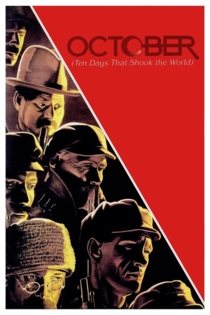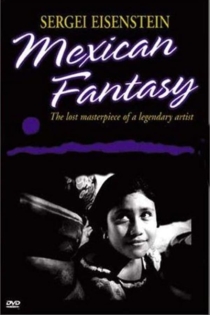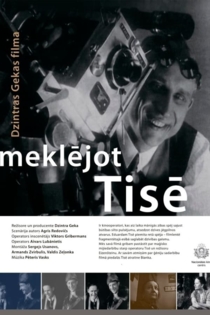
Eduard Tisse
1897 - 1961October (Ten Days that Shook the World)
Grigori Aleksandrov, Sergei Eisenstein
Vladimir Popov, Vasili Nikandrov
Sergei M. Eisenstein's docu-drama about the 1917 October Revolution in Russia. Made ten years after the events and edited in Eisenstein's 'Soviet Montage' style, it re-enacts in celebratory terms several key scenes from the revolution.
October (Ten Days that Shook the World)

Сергей Эйзенштейн. Мексиканская фантазия
Sergei Eisenstein, Oleg Kovalov
Alexandra Scheff, Grigori Aleksandrov
Eisenstein shot 50 hours of footage on location in Mexico in 1931 and 32 for what would have become ¡Que viva México!, but was not able to finish the film. Following two wildly different reconstruction attempts in 1939 (Marie Seton's 'Time in the Sun') and 1979 (Grigori Alexandrov's '¡Que viva México!') Kovalov has here compiled another hypothetical version of what Eisenstein's film might have been.
Sergei Eisenstein: Mexican Fantasy

Бессмертный гарнизон
Eduard Tisse, Zakhar Agranenko
Vasili Makarov, Vladimir Yemelyanov
The Immortal Garrison is set in June of 1941, at the outset of the Nazi invasion of Russia. A group of Soviet servicemen, languidly biding their time at the Brest fortress on the Polish border, are suddenly galvanized into action. All desires to return home to their wives and sweethearts are swept aside as the courageous garrison unites to thwart a common enemy. The siege of Brest has served as story material for countless Russian films: in lieu of contradictory evidence, Immortal Garrison must be adjudged the best of these films. For its American release, Immortal Garrison was double-featured with another Soviet production, The Mexican.
The Immortal Garrison

Frauennot - Frauenglück
Eduard Tisse, Grigori Aleksandrov
This film shows contrasting views of women with problematic pregnancies and the outcomes resulting when they seek out a back-alley abortionist, a trained and licensed abortion provider in a clinic, or an obstetrician capable of performing a Caesarian Section. The full film appears to be lost, but shortened versions, including one with dialogue scenes added in Germany in 1935, can be found on the internet. Additionally, Eisenstein's role in making the picture remains unclear: did he direct some or all of it, just edit it, or merely leave it to Alexandrov and Tisse to make? Released in the USA 1930 in a 65 minute (5800 ft.) version with English intertitles and a music track under the title BIRTH.
Misery and Fortune of Woman

Meklējot Tisē
Dzintra Geka-Vaska
Ģirts Krūmiņš, Eduard Tisse
The story of the world-renowned Liepāja-born cinematographer Eduard Tisse, whose wife was convinced it was he who created all the famous films of Sergei Eisenstein. The creators of the film develop the story and cross the lines drawn by biography, trying to understand the magic interaction between a cinematographer and a director, between the cinematographer and the object in front of his camera.
Seeking Tisse


